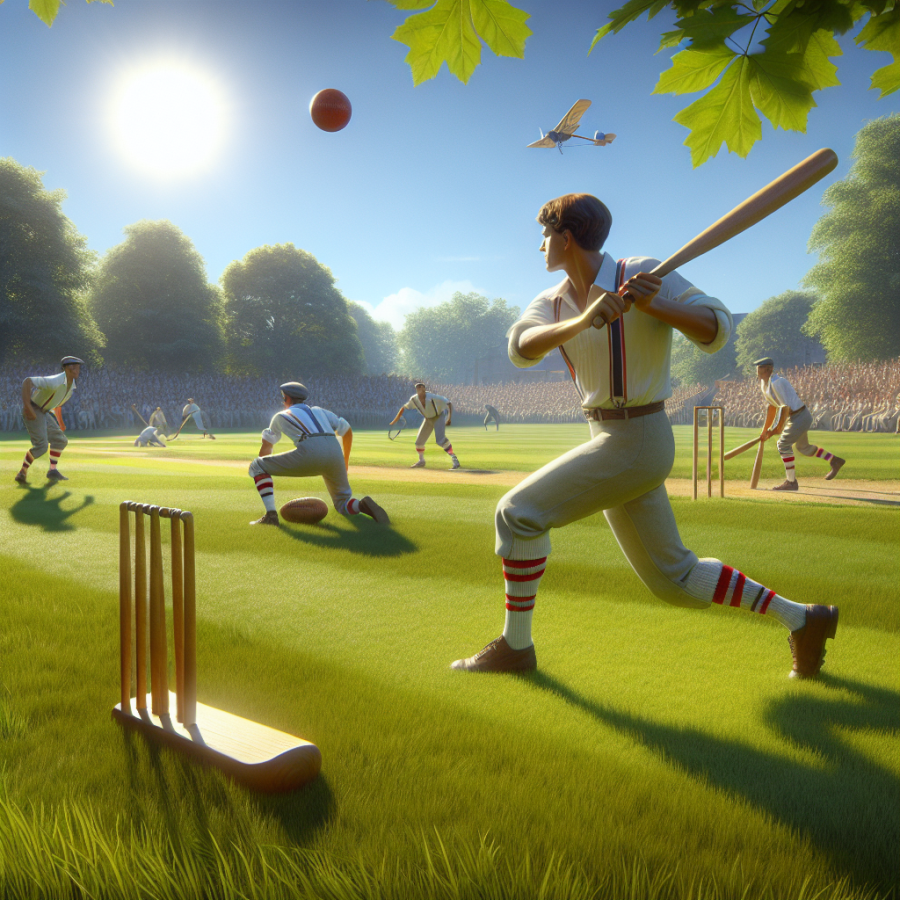From Village Greens to Modern Fields: The Evolution of Stoolball in England
Stoolball, often considered a precursor to modern cricket and baseball, has roots that entwine deeply with England's pastoral history. What began centuries ago on the village greens of Sussex has transformed significantly over time, morphing into a sport that manages to hold onto its unique character while adapting to modern sensibilities.
The origins of stoolball can be traced back to the 15th century when milkmaids played it using their milking stools as wickets. Initially, the game was mere recreational fun, with an objective as simple as hitting a ball away from the stool with a bare hand to score points. It wasn't just a source of entertainment; it also served to improve hand-eye coordination—a vital skill for laborers and handcrafters of the time.
As stoolball's popularity grew, it became more organized and began to move away from the makeshift fields of farmyards and commons. The 16th and 17th centuries saw stoolball becoming a fixture of Easter and other rural festivals. Its allure was such that even the church couldn't remain untouched by its charm. Churchyards became arenas where players gathered to enjoy stoolball matches, often to the displeasure of the clergy who preferred the sanctity of the church grounds be preserved for more solemn activities.
The transition of stoolball from a pastime to a more recognizable sports format started in the 19th century when it caught the attention of schools as an appropriate activity for girls. It was during this time that formal rules were written down, and the game started to take on its modern shape. Stools gave way to wickets that resembled those used in cricket, and batting techniques started to be refined. The game was still very much about community and less about competition, keeping it distinctively sociable and inclusive.
During the early 20th century, stoolball saw another shift. World War I greatly affected society in England, and as is the case with many sports, stoolball received a boon as it was picked up for recreation by soldiers recuperating in hospitals. The sport proved to be both physically beneficial and morale-boosting. In the post-war period, stoolball leagues begun to form, and this era marked the setting up of associations dedicated to the sport. The sport was becoming codified, with standardized rules and regulations coming into place.
In the latter part of the 20th century, stoolball continued to evolve.
Read also:
Exploring the Thrills of Six-Red Snooker: A Gamechanger?
Tracing the Roots: The Historical Legacy of Stoolball
Stoolball, a sport many consider to be an ancestor of modern cricket and baseball, boasts a rich heritage that traces back to the early medieval period of English history. The historical roots of Stoolball are typically difficult to pinpoint due to the scarcity of detailed written records from the era; however, there are enough references to piece together a rough picture of the sport's ancient legacy.
The earliest known mention of Stoolball dates back to the 14th century. Initially, it was portrayed as a game played particularly by milkmaids who would use their milking stools as wickets. These women would defend the stools with hand-held bats, repurposing their everyday tools into sporting equipment, thus embedding stoolball into the very fabric of rural life.
During the Tudor period, Stoolball gained popularity and was no longer confined to the rural dairy fields. It became known as a recreational pastime for both women and men, and there are accounts of the game being played in churchyards, where the flat gravestones served as ready-made pitches. The game's association with Easter Monday became a longstanding tradition, drawing larger spectator crowds and creating festive atmospheres.
By the 17th century, Stoolball started to see formalization in its play. Rules began to emerge, and it increased in competitiveness, drawing players from all walks of life. Despite several ups and downs in popularity, including bans and admonishments from religious figures who criticized it as a source of vice, stoolball persevered, solidifying its role in English culture.
The 18th and 19th centuries saw schools adopting Stoolball as a suitable game for girls, effectively providing an early prototype for women's cricket. It was promoted as an activity that provided physical exercise without being too strenuous or unseemly for the fairer sex. During this period, Stoolball's rules and gameplay underwent further refinement, shaping the sport into a more organized pastime with a clearer structure.
In the 20th century, with modern sports gaining prominence, Stoolball's place in the annals of history seemed uncertain. However, a resurgence of interest in folk traditions and historical sports at various points during the century helped retain stoolball’s presence as a niche interest and recreational sport.
Today, Stoolball is recognized for its historical significance and is still played in certain regions of England, particularly in Sussex, where it enjoys a consistent following.





